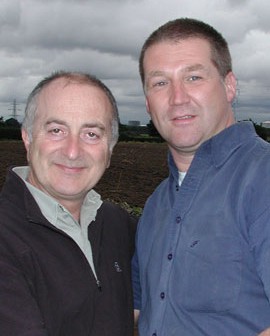A LOCAL historian believes he has proved “beyond all doubt” that a quaint Warrington village was once home to the Roman
army after his latest discoveries.
Archaeologist and presenter James Balme has succeeded with his trusty metal detector where television’s Time Team failed,
after uncovering rare silver Roman coins used to pay soldiers.

He has been researching and studying the area around Lymm and Warburton for 10 years and several excavations
have taken place during that time to try to locate evidence of military activity in the area. Eighteen months ago
James was joined by Tony Robinson and the Time Team crew, who spent three days excavating a field in the village to
finally try and answer the mystery.
But the programme concluded there was no evidence of Roman military activity and that the Roman finds on the field
made by James, were the result of muck spreading and tipping from a nearby Roman farmstead.
James from Woolston, Warrington, said: “When Time Team carried out a three day dig they were of the opinion that
no military activity had taken place and that a few finds and a bit of wishful thinking was the obvious answer although
they agreed that farming on the land had been carried out since Roman times.

At the time he feared Time Team may have been excavating the wrong area.
“Although I was disappointed I was sure that the coinage and other finds were clearly Roman Military in their nature.
This led to some people doubting my theories, which at the time was understandable.
“I decided that the mystery had not been solved and after taking a 12 month break I decided to launch phase two of
my research to answer the question. I have now located a new area in the village that is producing finds and coinage
that is clearly military in nature.”

His latest finds include two stunning silver coins known as denarii which he discovered with a metal detector.
These coins were brought over to Britain to pay the soldiers. The 1st coin is an issue of 109-108BC. The coin has
the head of Roma on the obverse (legend [ROMA]), with Victory in a biga on the reverse (legend L FLAMINI CILO – the
moneyer, Lucius Flaminius Chilo).
The second denarius is in poor condition and it seems to show a female with a quadriga on the reverse. This would
have been a common combination between the mid-second century BC and the early-first century.
James said: “I’m delighted the area is still producing Roman material,
as I was quite certain that there must have been something happening in
the vicinity. These new discoveries are helping archaeologists
understand more about Roman Military activity in this area of the North
West.”




